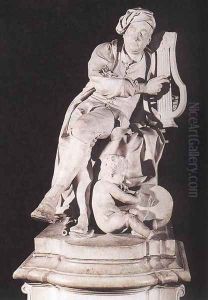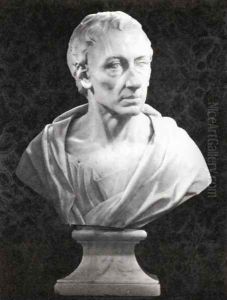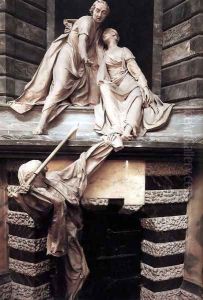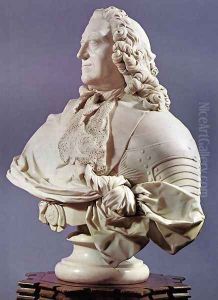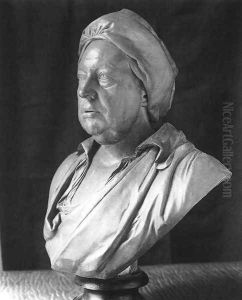Louis Francois Roubiliac Paintings
Louis François Roubiliac was a French sculptor who is considered one of the most important and talented sculptors in England in the 18th century. Roubiliac was born in 1695 in Lyon, France, and was trained in the workshop of his father, who was a decorative stonemason. He further honed his skills in Paris, where he worked under Balthasar Keller and subsequently in the workshop of Nicolas Coustou, who was a prominent French sculptor of the time. Roubiliac's early work in France, however, remains obscure and little documented.
In the 1730s, Roubiliac moved to London, which was to become the primary base for his life and career. His arrival in England coincided with a period of increasing demand for monumental sculpture and portrait busts, particularly from the aristocracy and the emerging wealthy classes. His first major commission in England was the statue of Handel for Vauxhall Gardens in 1738, which showcased his skillful rendering of drapery and his ability to capture the lively expression of his subjects.
Roubiliac's reputation grew with his monumental works, such as the tomb of the Duke of Argyll in Westminster Abbey (completed in 1742) and the tomb of Sir Isaac Newton (completed in 1755), also in Westminster Abbey. These works are characterized by their dynamic compositions and the emotional intensity of the figures, reflecting the influence of Baroque art, yet they also possess a level of refinement and elegance that is associated with the Rococo style.
In addition to his public monuments, Roubiliac was highly sought after for portrait busts, which were popular among the British elite. His busts are notable for their psychological depth and lifelike quality, as seen in his portraits of Alexander Pope, William Hogarth, and other leading figures of the day.
Roubiliac's work marked a departure from the more restrained and classical style that had been prevalent in British sculpture. His figures often conveyed a sense of movement and emotion that was new to English patrons. Despite his success, Roubiliac faced financial difficulties throughout his career, partly due to his meticulous working methods, which meant that he produced fewer pieces than some of his contemporaries.
Roubiliac continued to work until his death in 1762 in London. His legacy is preserved in the numerous works that adorn British churches, cemeteries, and other public spaces. Roubiliac's influence extended beyond his lifetime, as he left a lasting impact on the development of sculpture in Britain. His style and techniques would be studied and emulated by subsequent generations of sculptors, cementing his place as a major figure in the history of British art.
